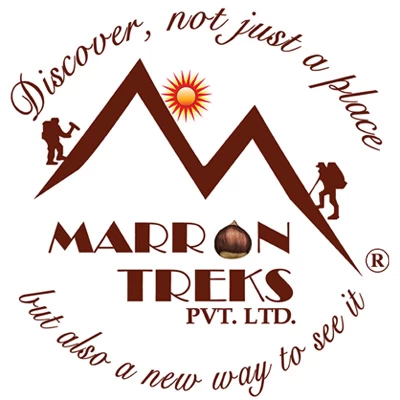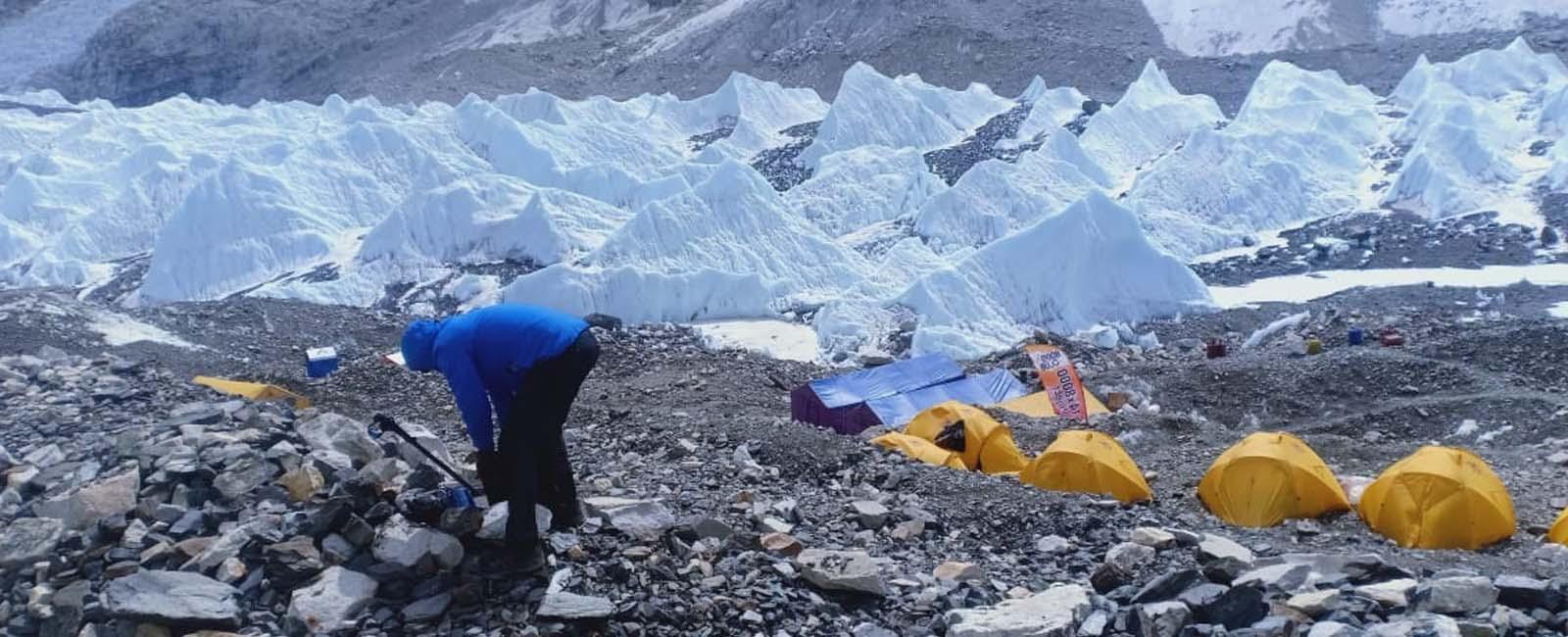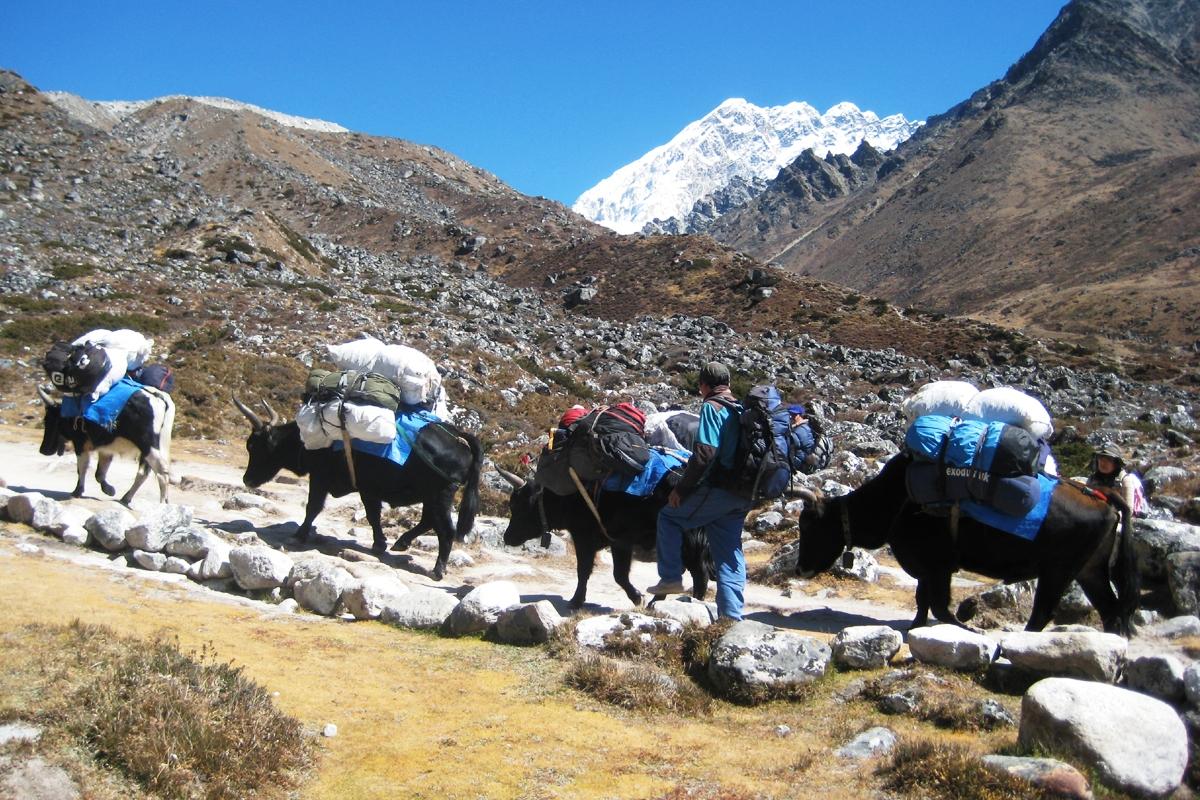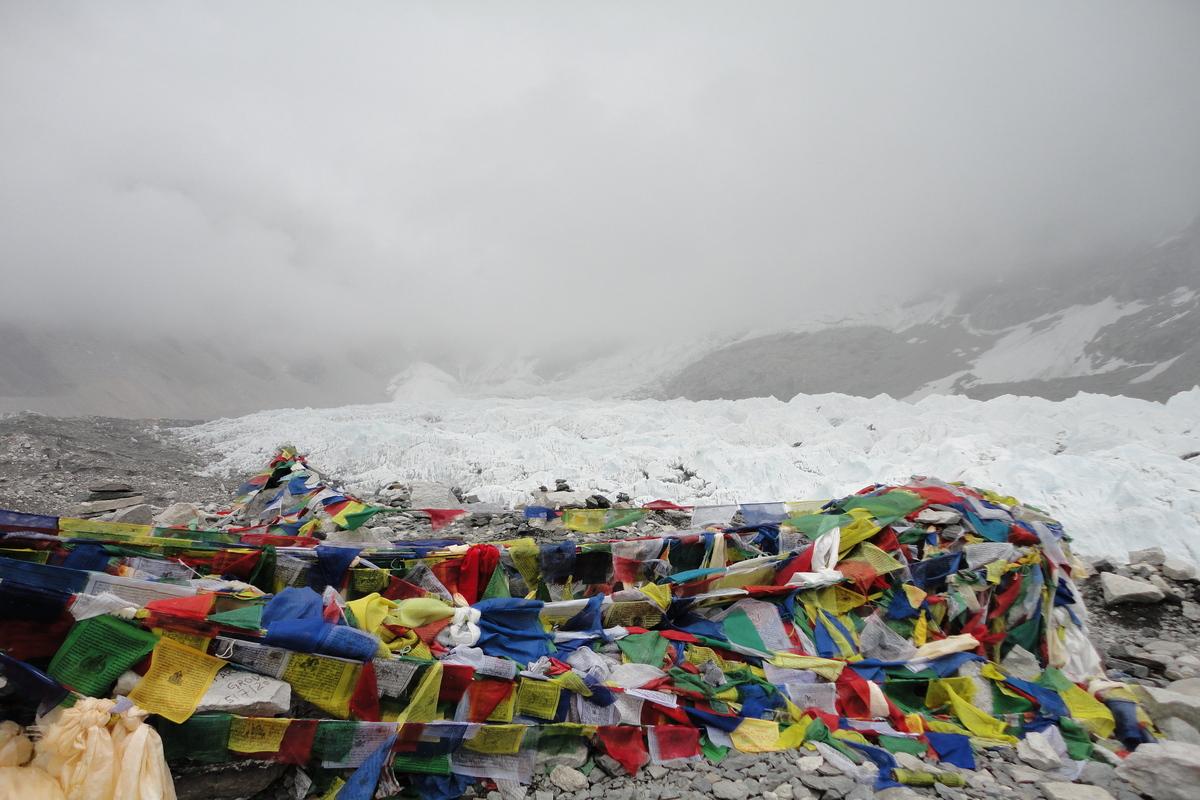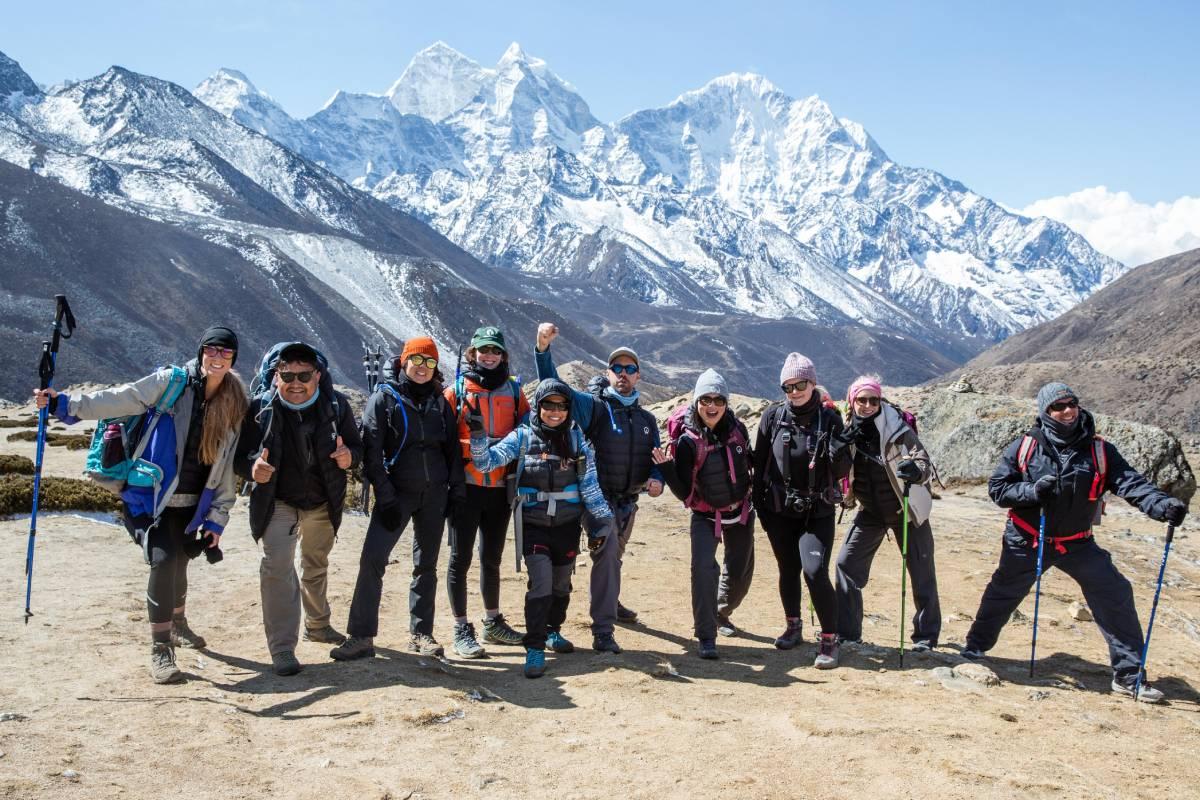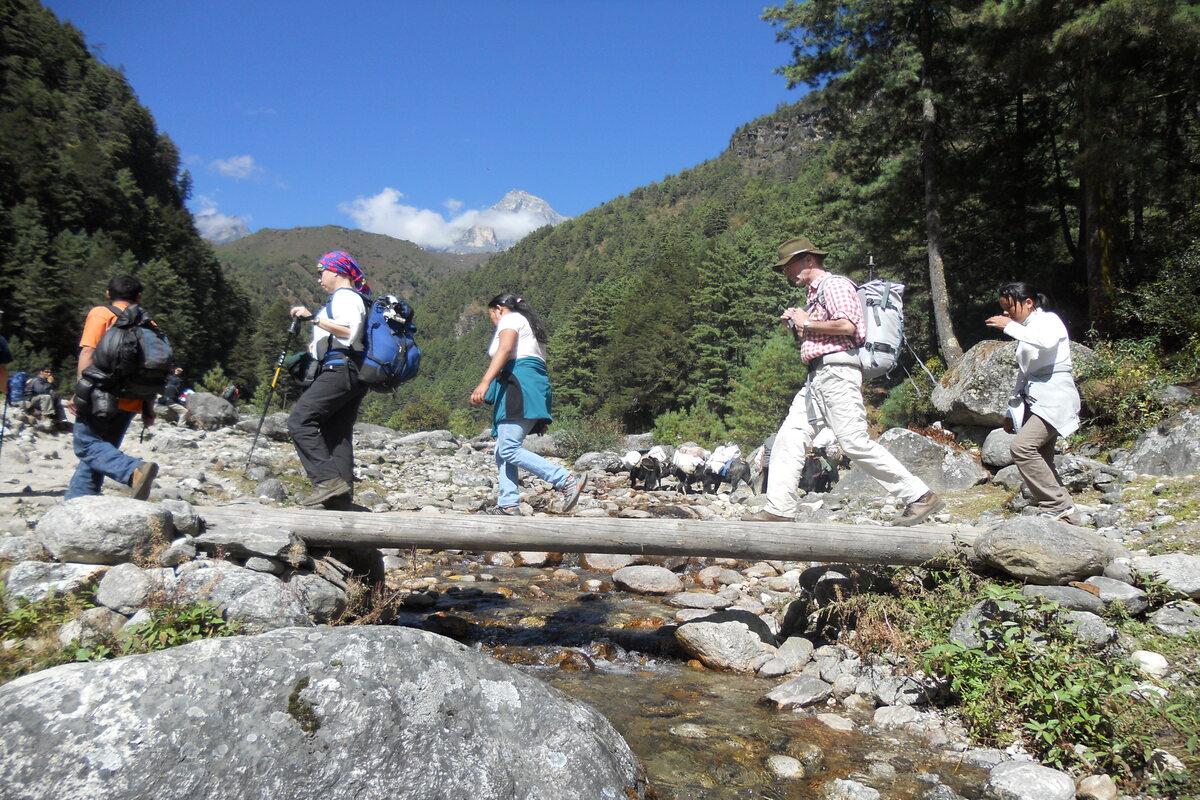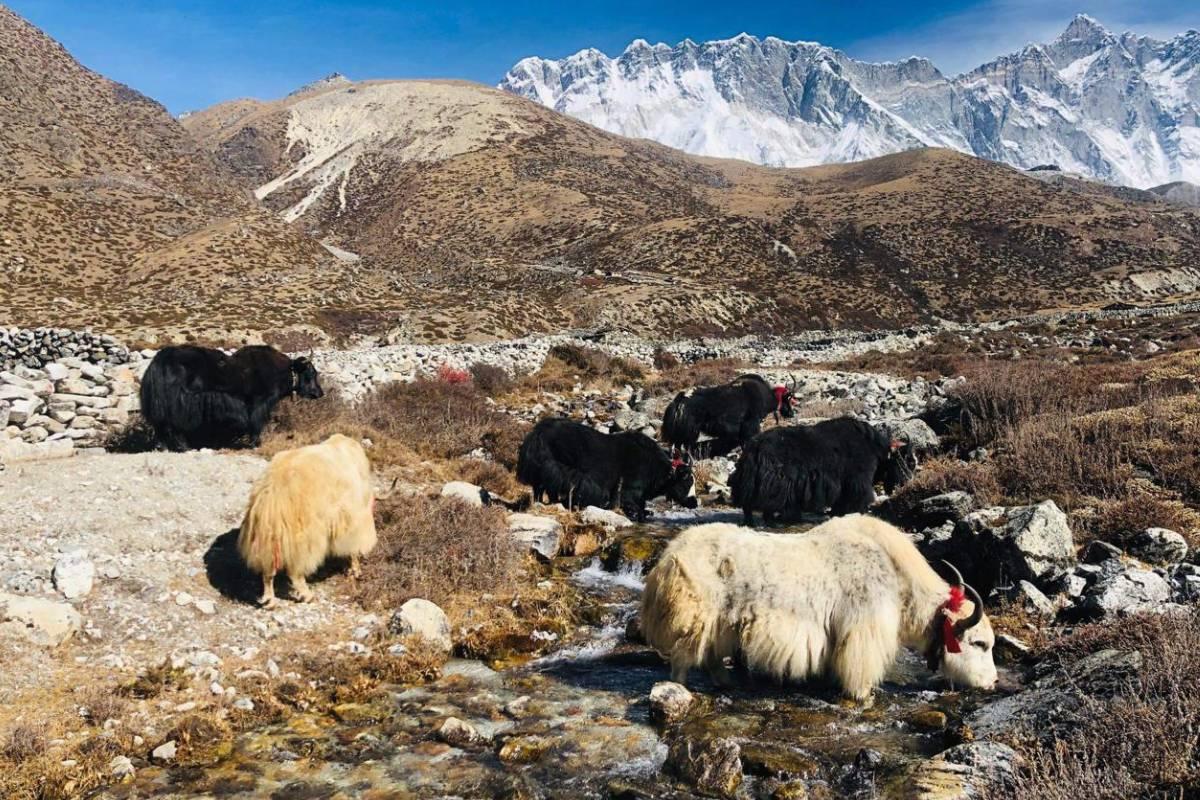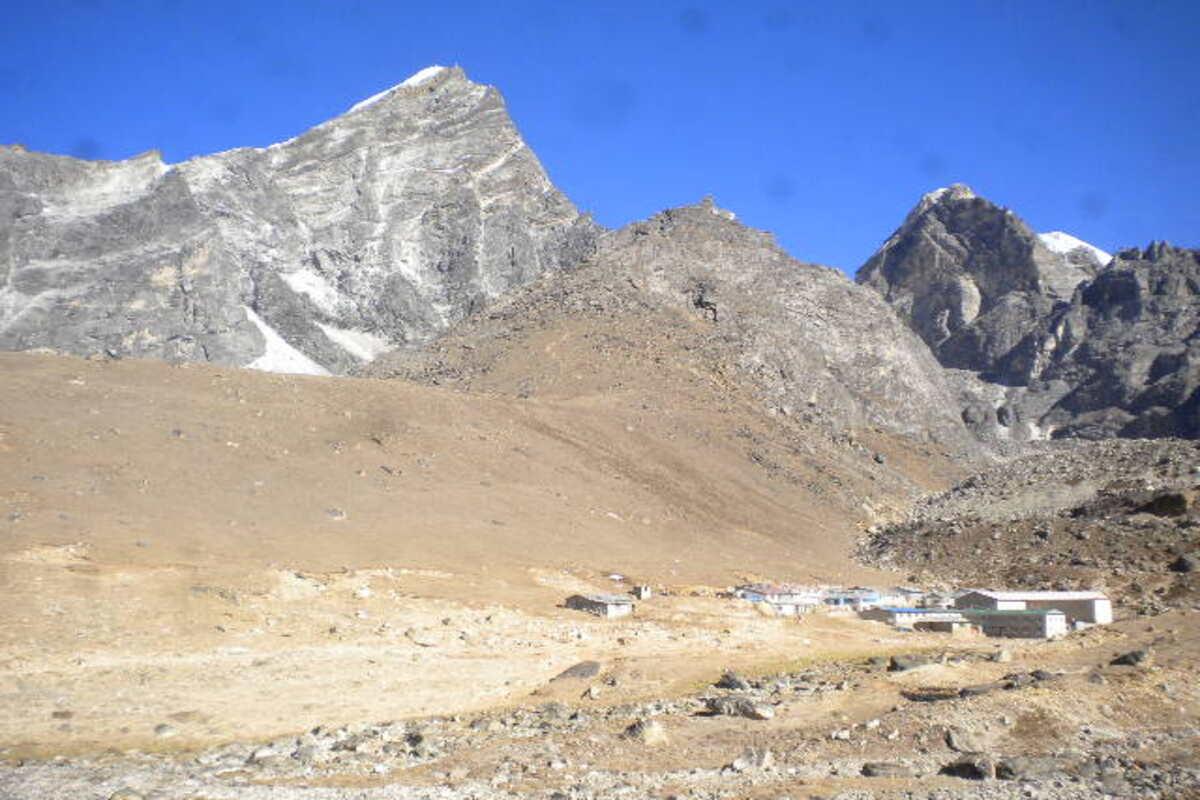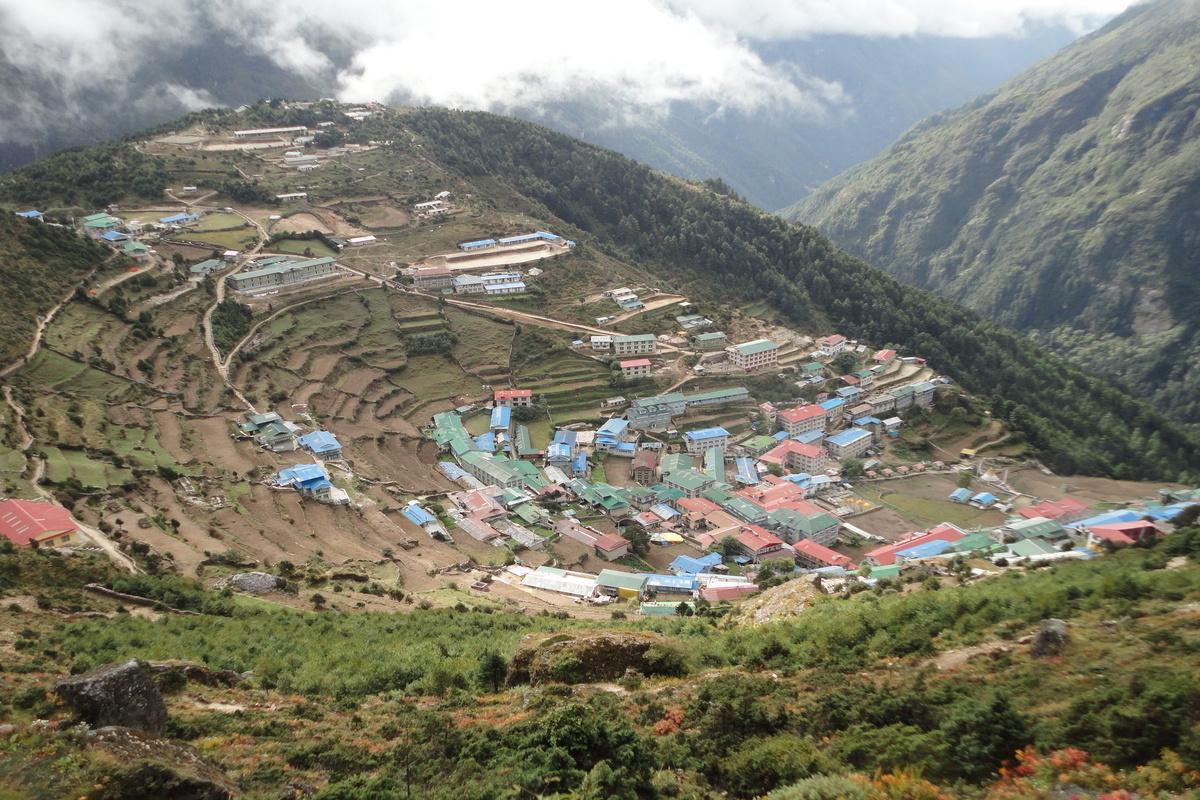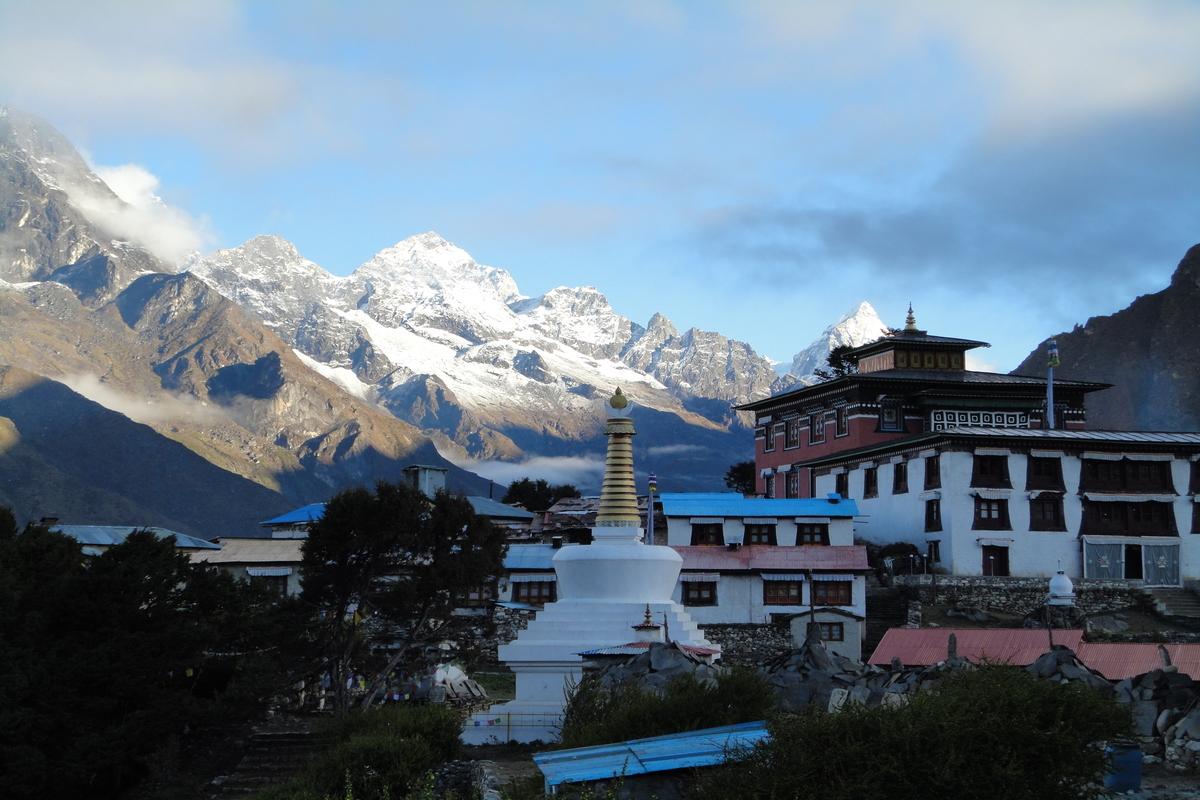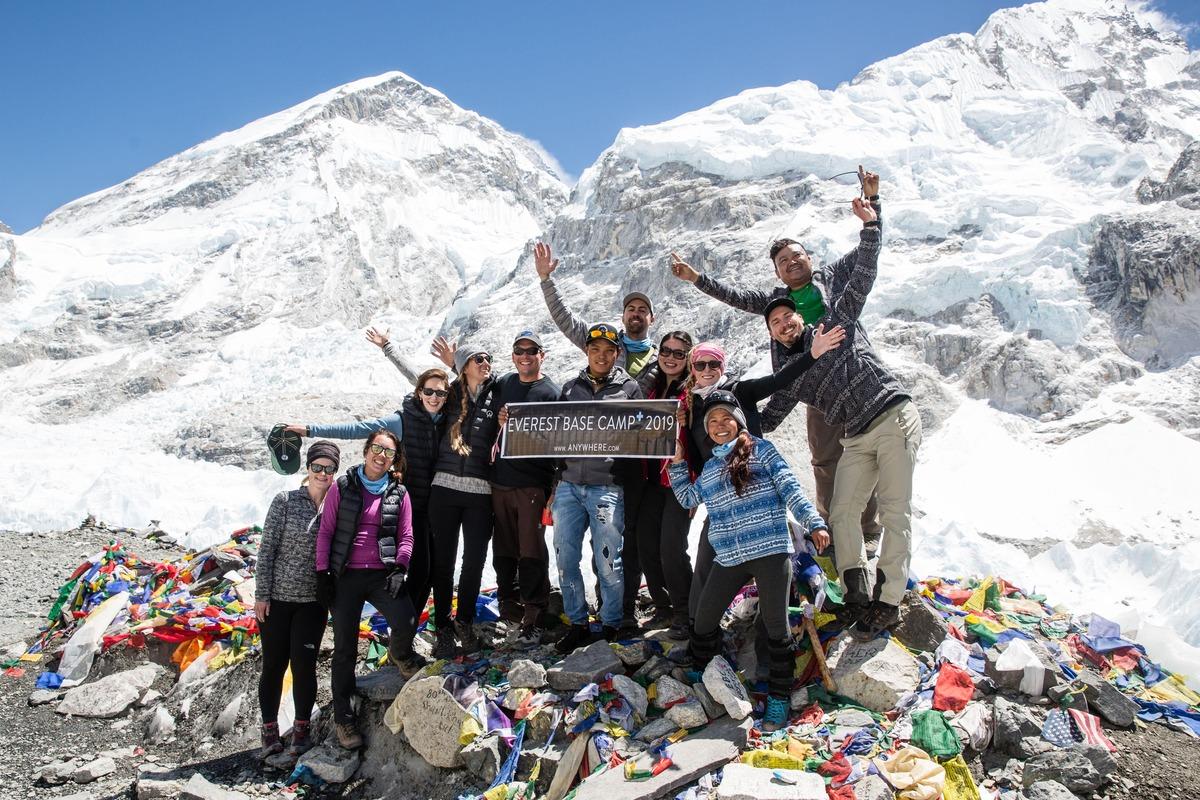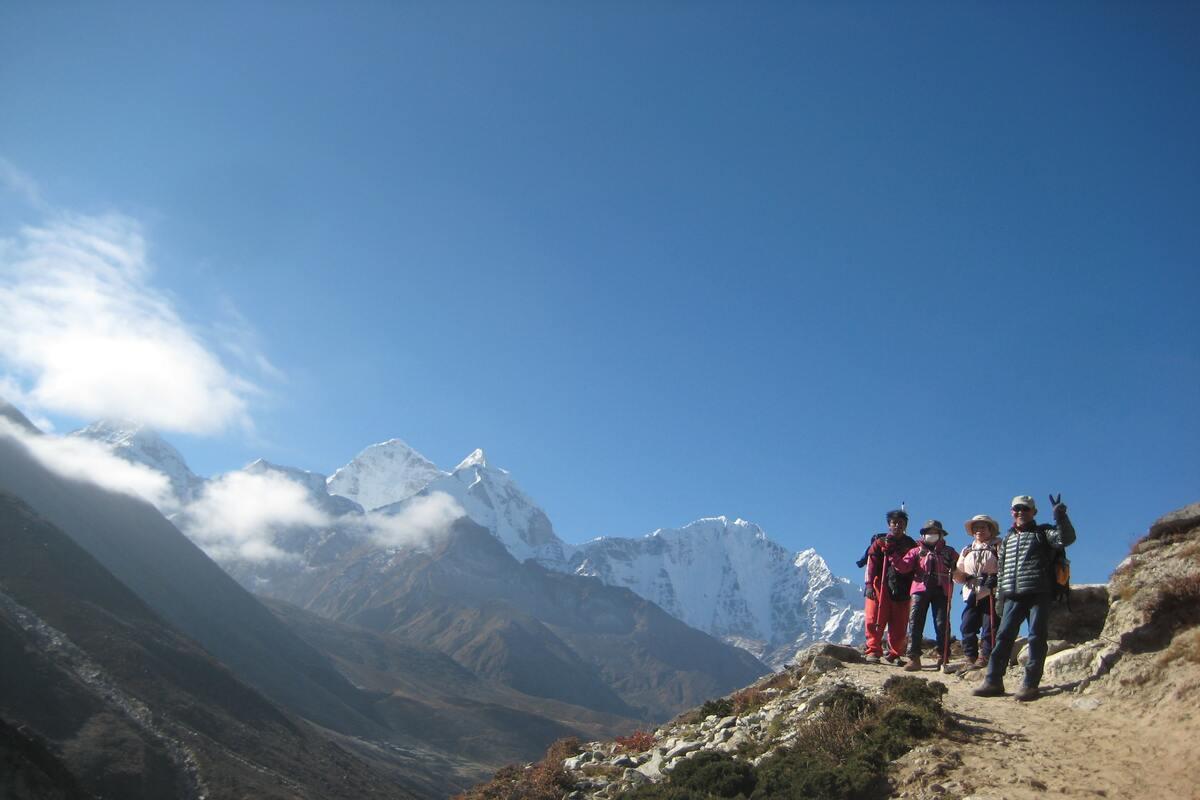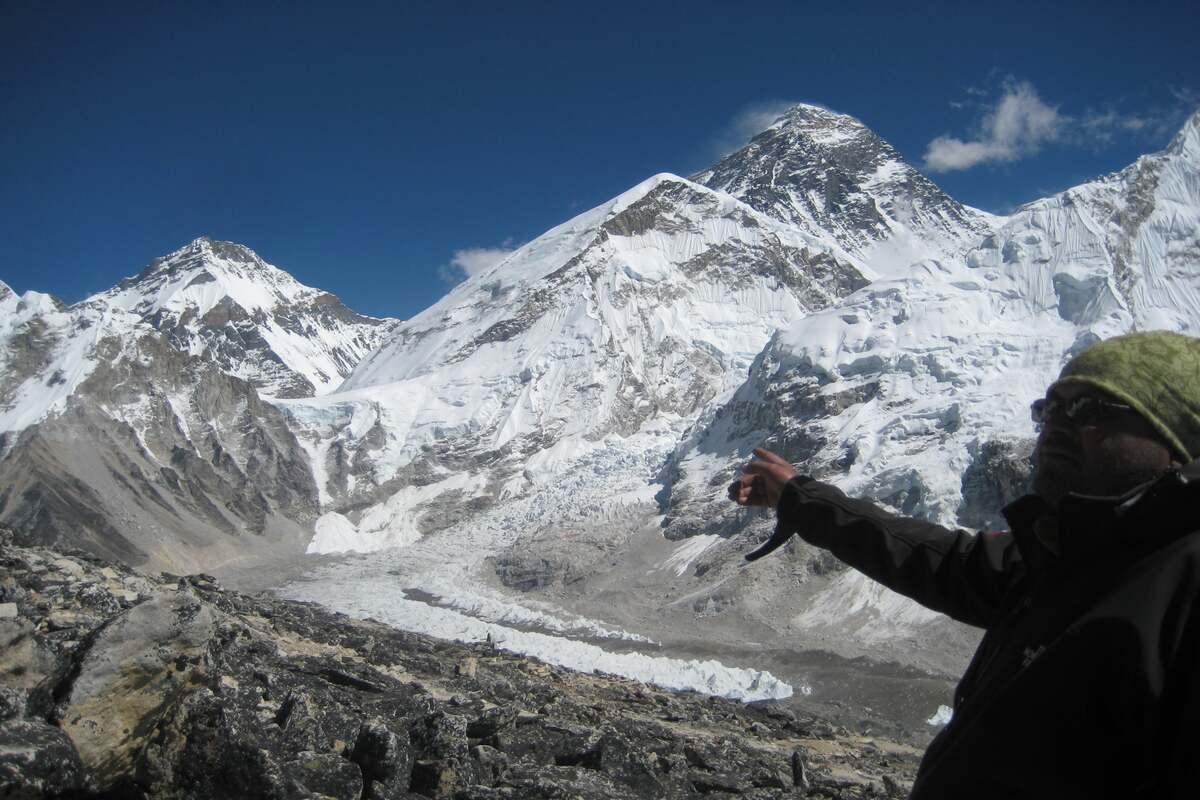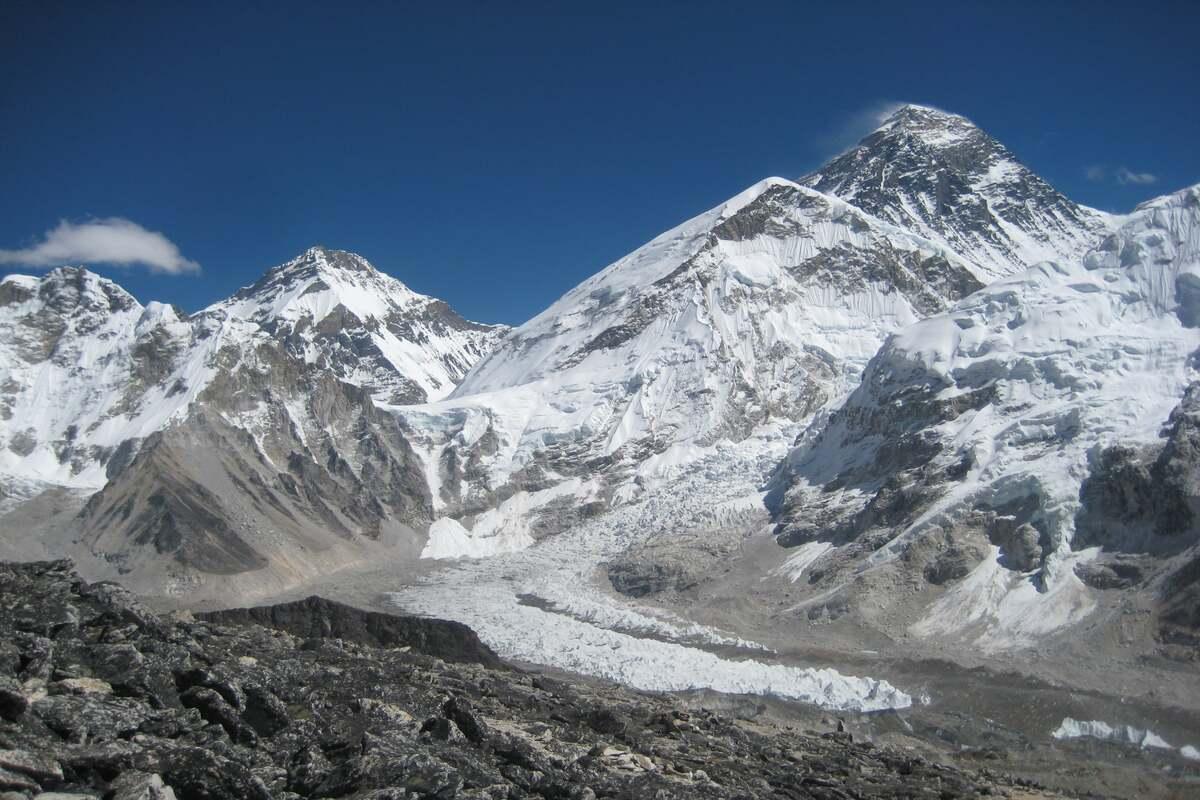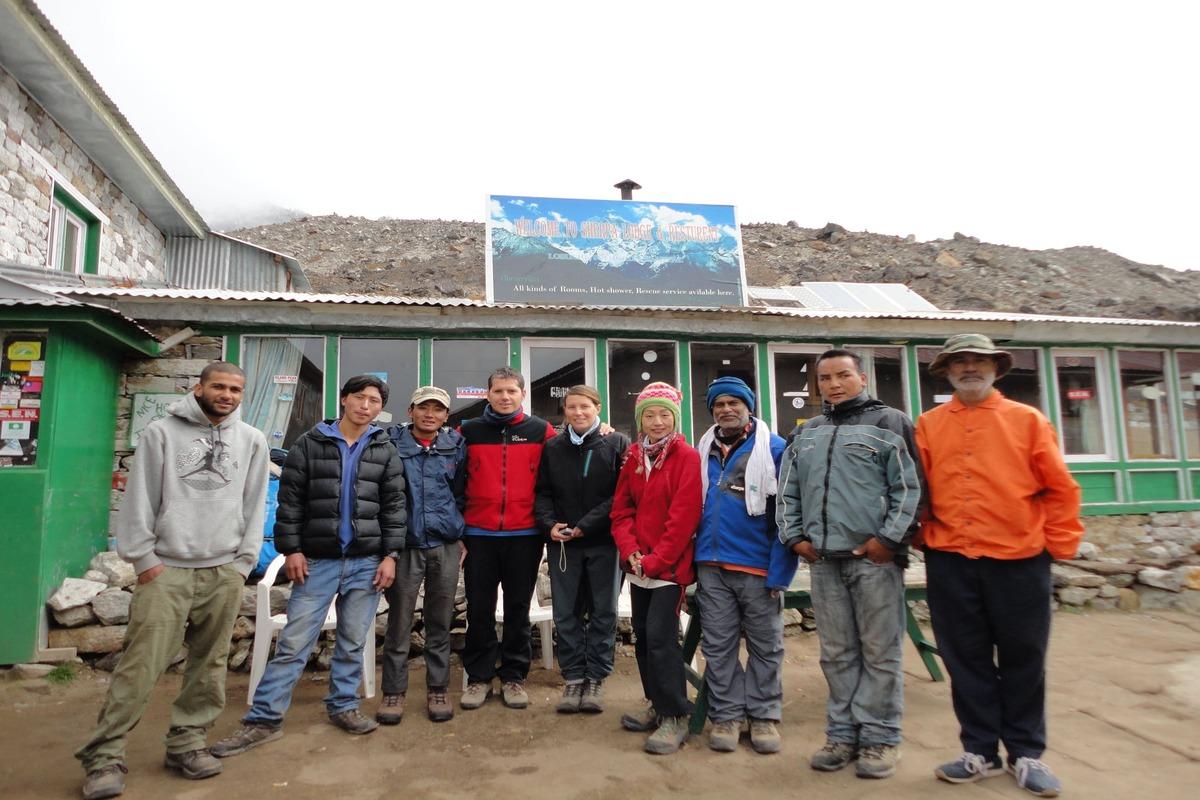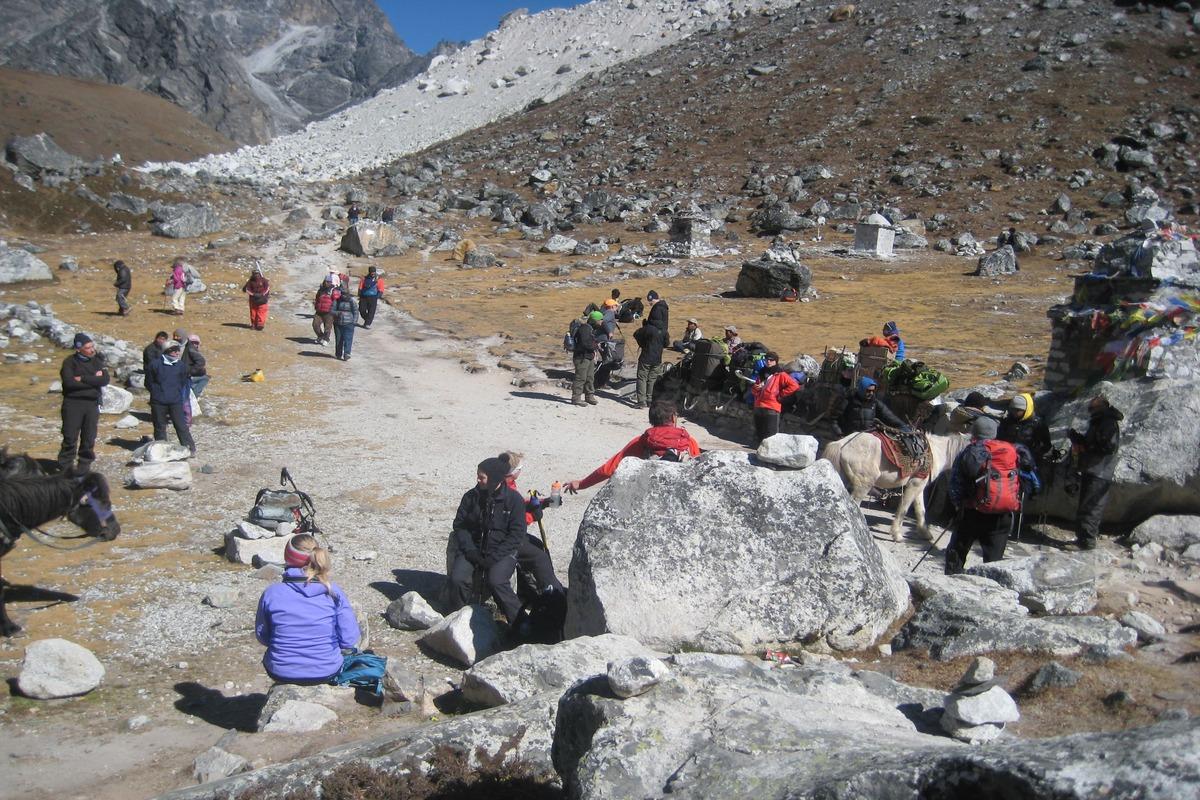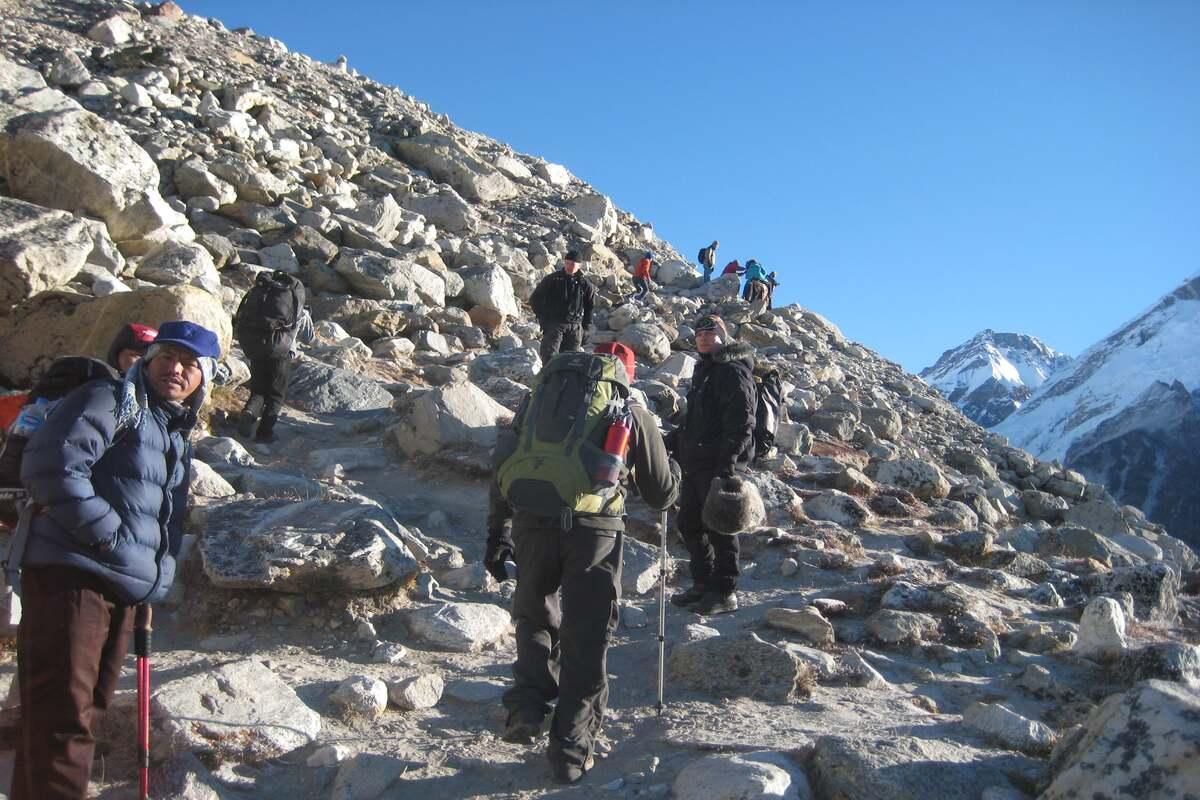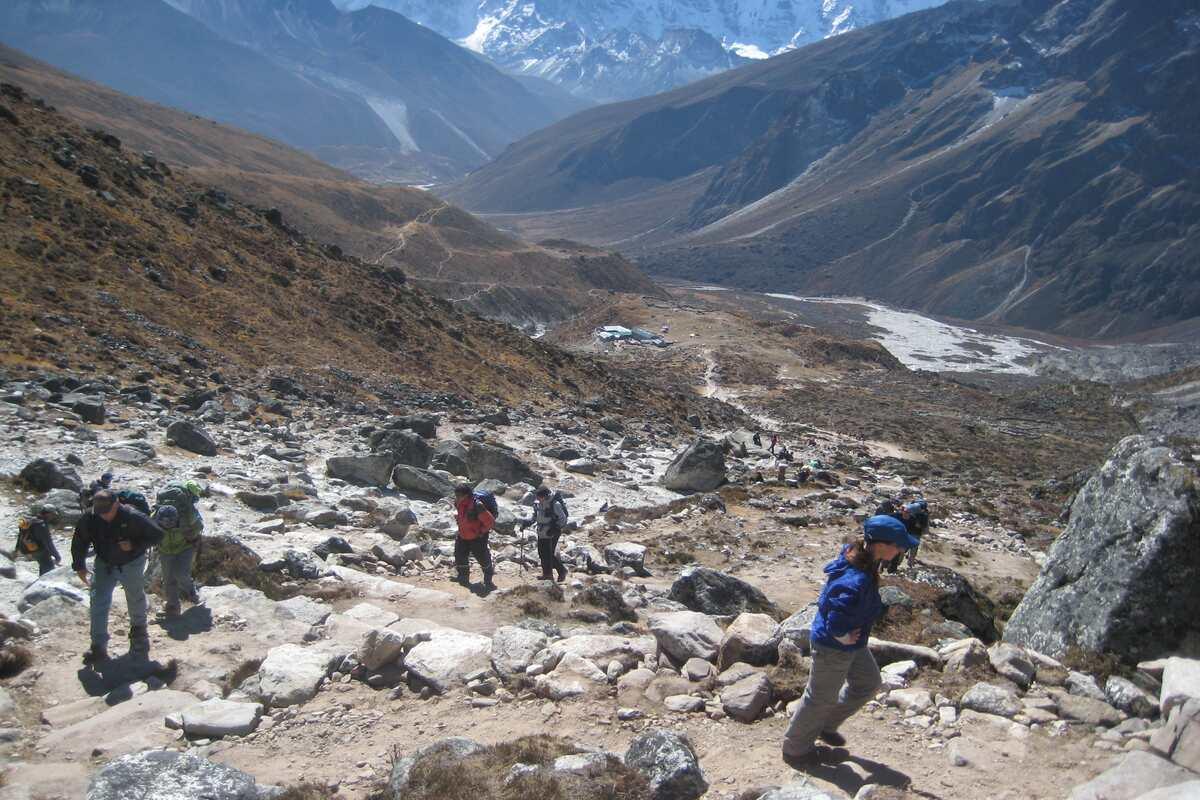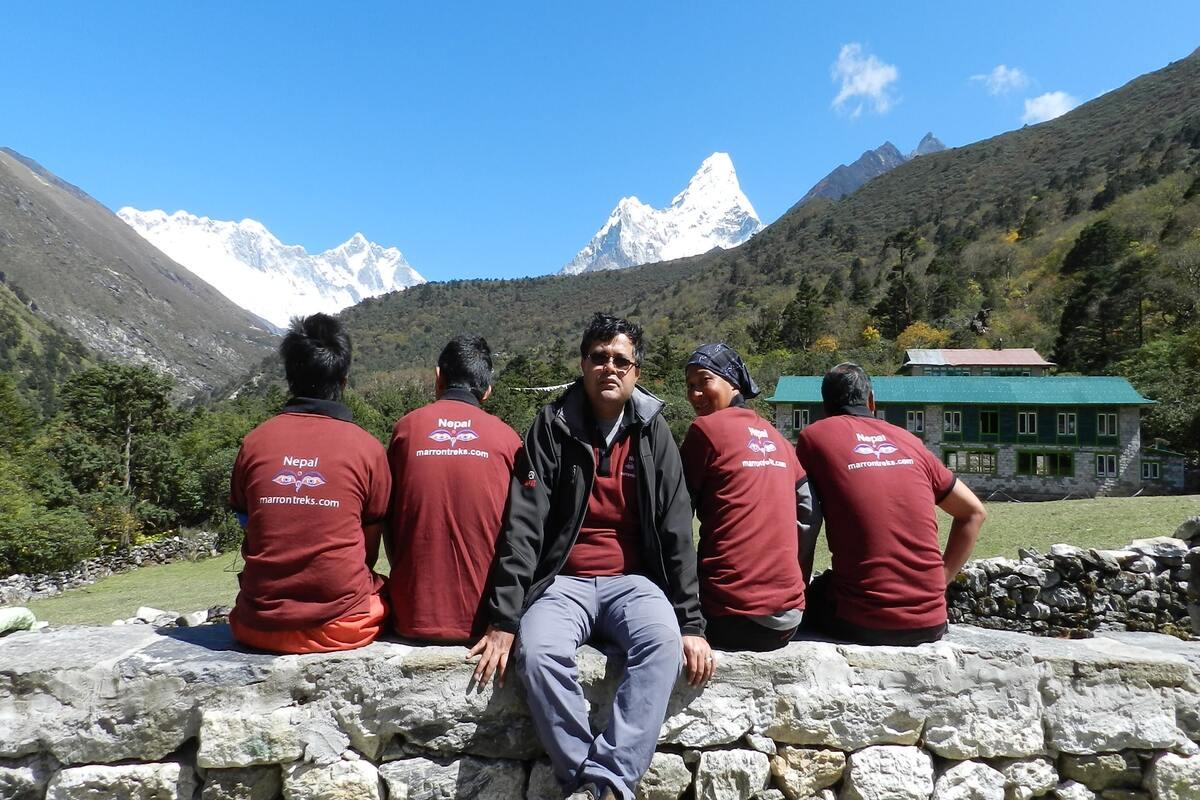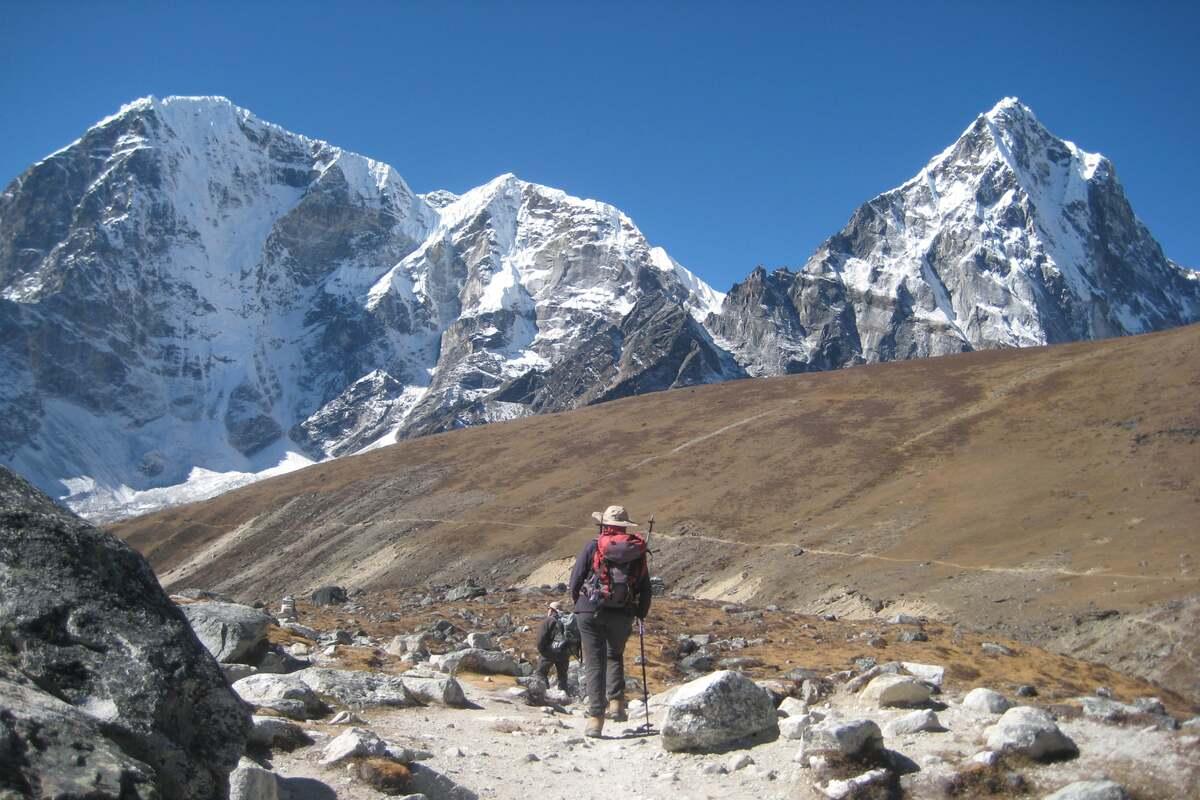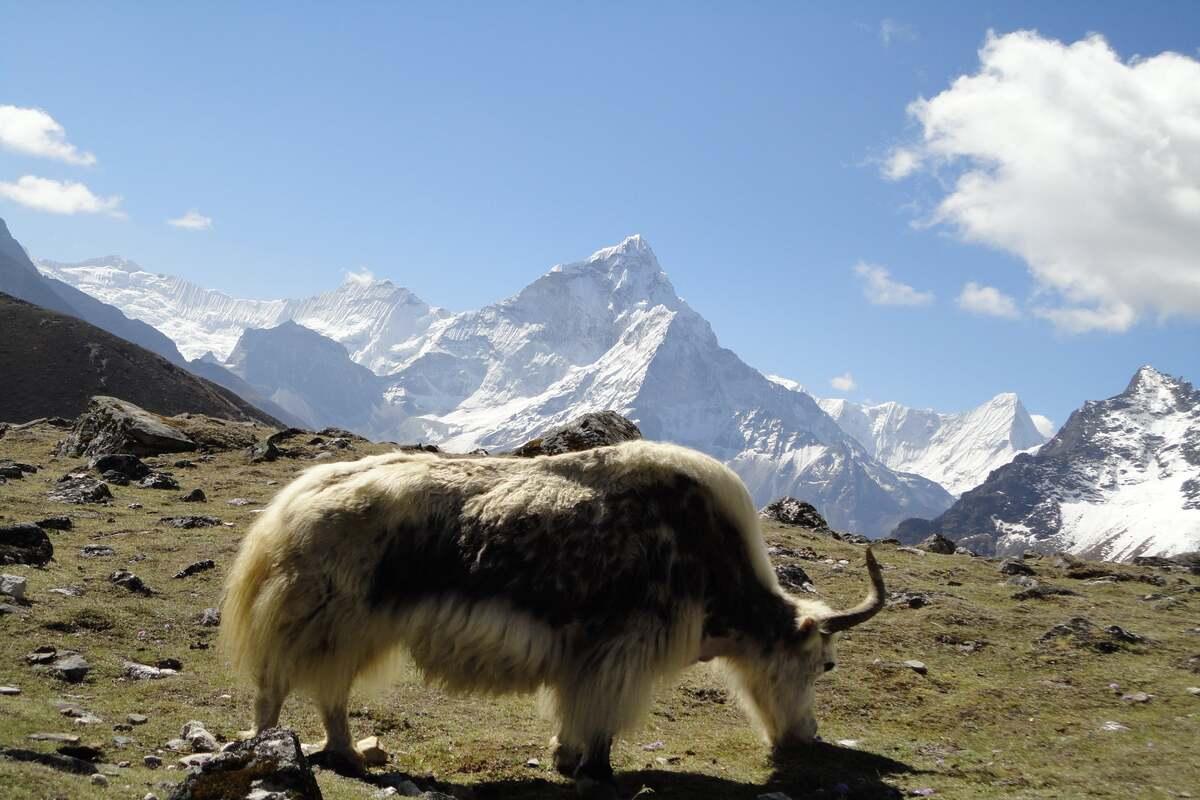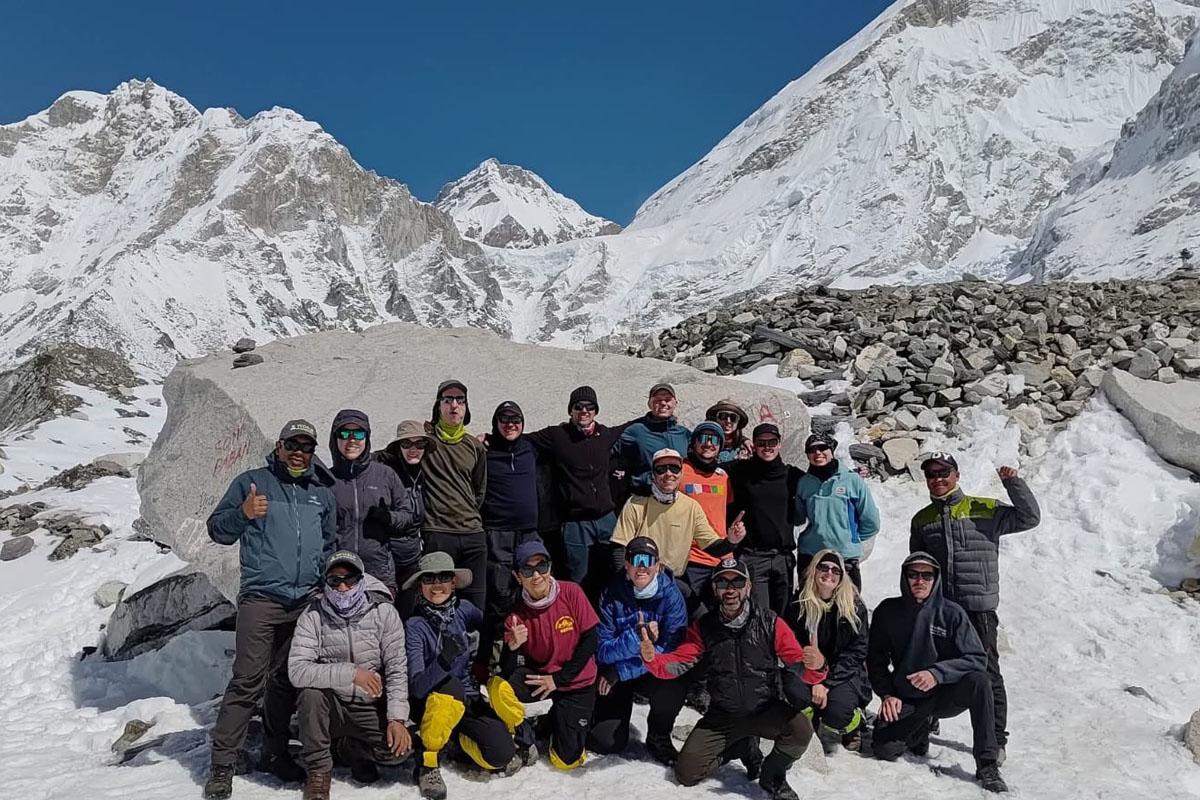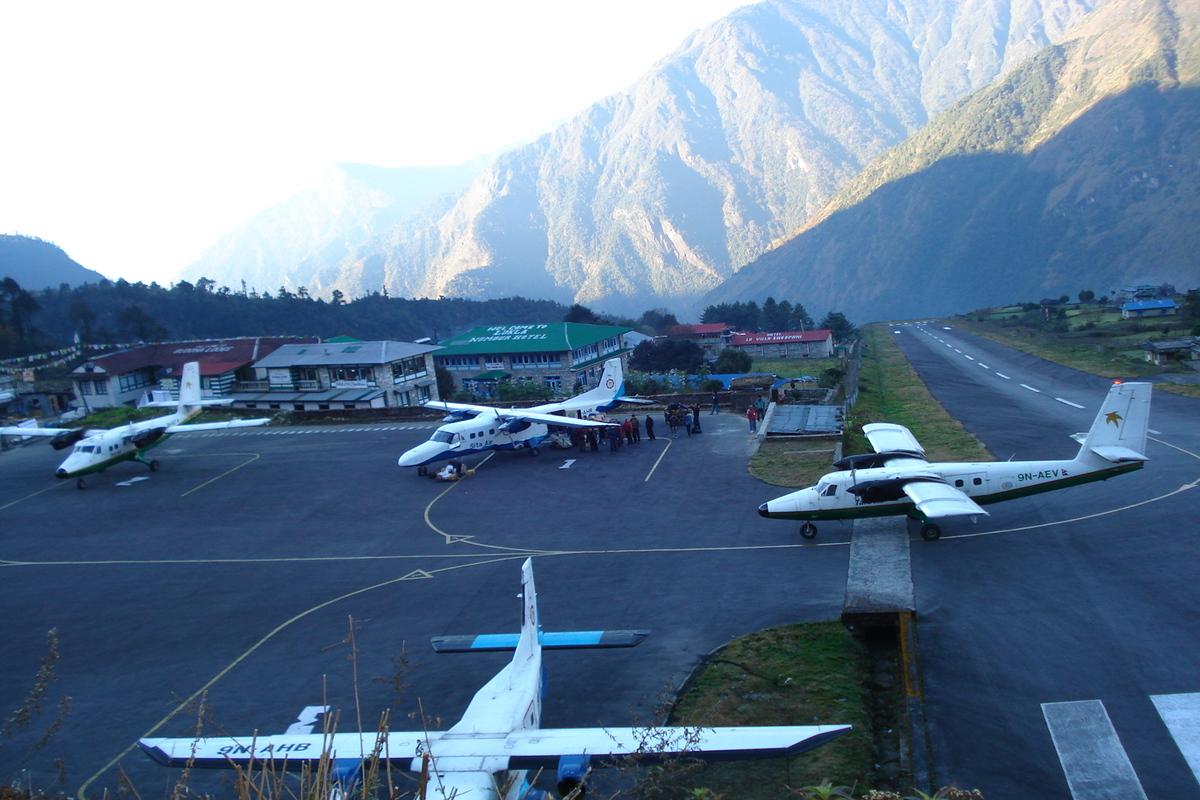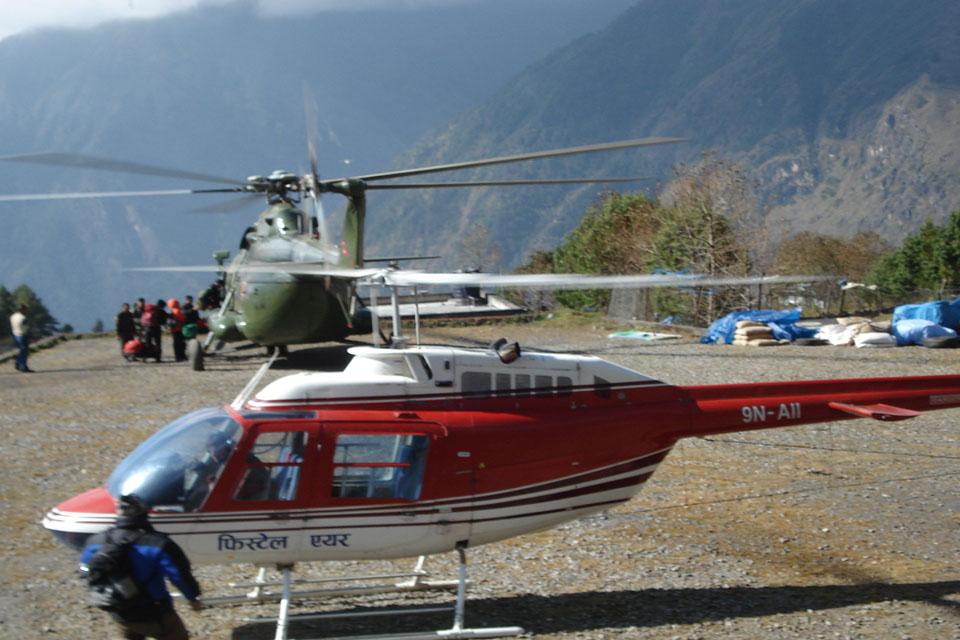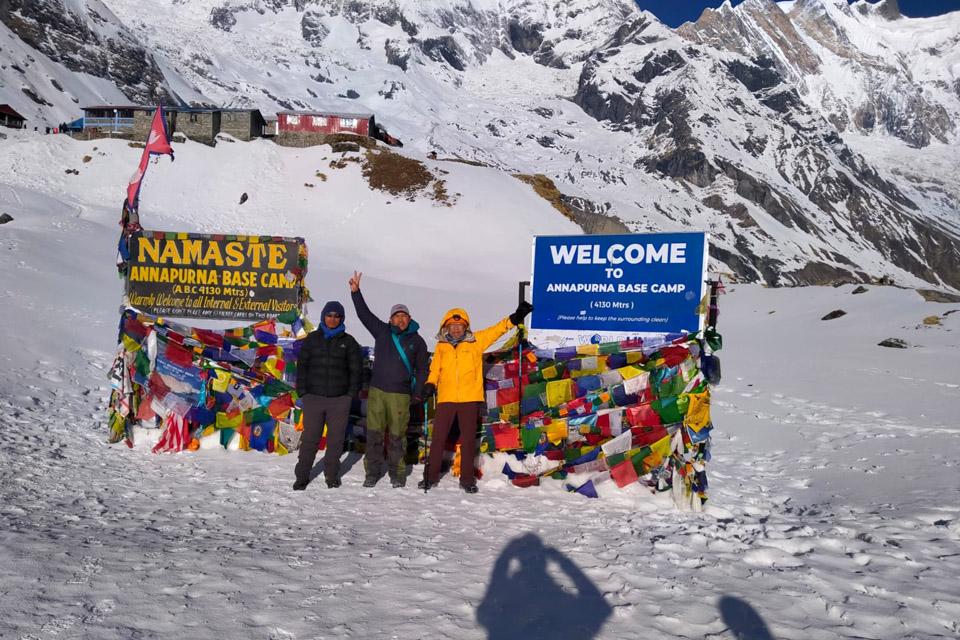Everest Base Camp Trekking
Trip at a Glance
Everest Base Camp Trek is a popular trekking route in Nepal and also one of the best treks in the world. Perhaps many of us have imagined ourselves standing atop Mount Everest, which rises to a height of 8,848 meters. But in reality, it may not come true for all of us, but with good physical fitness and strong determination, one can make it to the Everest Base Camp at the foot of mighty Mt. Everest. This is what the Everest Base Camp Trek is all about.
The Trek to Everest Base Camp itinerary begins with a scenic flight from Kathmandu to Lukla, and upon arrival in Lukla, start the trek to Phakding. The route then follows several high Himalayan villages and stopovers like Namche Bazaar, Tengboche, Dingboche, and Gorak Shep until reaching the Everest Base Camp. The Everest region is protected under the Sagarmatha National Park, which is also a UNESCO World Heritage Site where the trek is undertaken.
Trekking to Everest Base Camp opens up another great opportunity to experience the local culture of the Sherpa community. The duration of the trek is 12 days in total, starting and ending in Kathmandu. Anyone with good physical fitness and even no past trek experience can complete the trek with more or less little difficulty or no difficulty. The key here is to be well-prepared 3 to 4 months before the trek’s departure.
The best season for the Everest Camp trek is the spring (March to May) or autumn (September to November) seasons. During these months, the weather will be good with clear skies and unobscured mountain views.
The Everest Base Camp trek is an unforgettable experience that allows you to immerse yourself in the beauty of the Himalayas and witness the world's highest mountain in all its glory.
EBC Trek Highlights
- Scenic Trans Himalayan Flight from Kathmandu to Lukla & back.
- Trek inside the Sagarmatha National Park—a UNESCO World Heritage Site.
- Witness the lifestyle of people living in the high Himalayas, especially Sherpas.
- Visit Tengboche Monastery (3860 m)—the biggest in Khumbu.
- Attend Everest Base Camp (5364 m) & witness Khumbu Glacier.
- Hike to Kala Patthar (5644m) with 360-degree Himalayan panorama.
- Astonishing views of Mount Everest, Mount Amadablam, Mount Lhotse, Mount Nuptse, Mount Pumori, Lobuche Peak, & many more.
How to train for the trek to Everest base camp?
Before you set off on your adventure, there are a few things you should keep in mind for the Everest Base Camp trekking:
Fitness level
The Everest Base Camp trek is strenuous-graded, and you will need to have a good fitness level before going on this adventure. You are suggested to prepare for the trek by doing some cardio exercises, such as running or cycling, and strength training to build your endurance and stamina. Climbing up stairs ups and downs is also a great help since the trek involves lots of ascending and descending but no technical skills are required.
Altitude sickness
On the trek to EBC Camp, the altitude can be a significant barrier. It’s vital to acclimatize properly and take your time to avoid altitude sickness. Be careful and pay attention to your body; stay away from smoking and alcohol; and drink lots of water. Make sure you understand the signs and that you have appropriately adjusted. The best course of action is to descend right away if you feel any.
Packing
Be sure to pack smartly and lightly. You will have to carry the daypack of your essential things like a mobile, camera, sunscreen, etc. during the trek, and the porters will carry your heavy luggage. Make sure you have all the necessary equipment and clothing, including appropriate hats, gloves, warm layers, and a good pair of hiking boots.
Weather
The Himalayan region experiences unpredictable weather that can shift drastically in a couple of minutes. You need to be prepared for all types of weather conditions, including snow, rain, and wind. But that depends upon the time you are trekking, and usually in the high trek seasons, weather will be generally clear and mountains visible with no snow or rain.
Trekking Trail
The trail can be challenging, with steep inclines and uneven terrain. Make sure you have the necessary equipment and are physically ready. We recommend preparing before the trek’s departure, which will make it easy for you to accomplish the trek and enjoy it even more.
With these things in mind, you’re ready to embark on a once-in-a-lifetime adventure to Base Camp. Enjoy the stunning views and cultural experience that Nepal has to offer!
Best time to trek Everest Base Camp
The best time to trek to Everest Base Camp is during the spring season (March to May) and autumn season (September to November). During these seasons, the weather is mild and dry, offering clear views of the mountains. The temperatures are also moderate, with daytime temperatures ranging from 10-20°C (50-68°F) and nighttime temperatures dropping to around -5°C (23°F). However, it is important to note that weather conditions can be unpredictable and can change quickly in the mountains, and proper preparation and gear are essential regardless of the season.
Everest Base Camp trek temperatures
Because of the high altitude and mountainous terrain, the temperature in Everest Base Camp changes by season and month and can be unpredictable.
Winter (December-February)
The coldest months are December, January, and February, when average daytime temperatures are 8°C and average overnight lows are -15°C.
Autumn (September-November)
September through November, when daily highs of 20°C in September drop to 12°C in November.
Spring (March-May)
A period of transition from winter to summer, ending in pleasant weather by May with daily highs of 15°C and nighttime at -5°C at the lowest.
Summer (June-August)
The month of June through August typically experiences daytime highs of 16°C and average low temperatures of -1°C.
Accommodation in Everest Base Camp Trek
The accommodation facilities on the EBC Trek cater to different budget levels and preferences and can vary greatly in terms of price, comfort, and facilities. There are several options for accommodations along the Everest Base Camp trek route. The most popular ones and basic accommodations are tea houses, which are small lodges or guesthouses that offer basic accommodations and meals along the trekking route.
Tea houses are the most popular form of accommodation on the EBC trek. There are also a few luxury lodges available along the trekking route that offer more comfortable accommodations, hot showers, and other amenities. These are more expensive than the basic tea houses and not as plentiful. However, luxury lodges are only at limited locations along the EBC trail, like Lukla, Phakding, Namche, Pangboche, and Tashinga.
Everest Base Camp trek food
Along the way, trekkers have the opportunity to enjoy a variety of delicious foods that are not only tasty but also provide the necessary energy and nutrients required to complete the trek.
During the trek, trekkers typically eat three meals a day, starting with a hearty breakfast to fuel their bodies for the day ahead. Breakfast options include porridge, Tibetan bread, pancakes, eggs (scrambled, boiled, or fried), and chapati ‘bread’. Lunch and dinner options include Dal Bhat (the traditional Nepali dish consisting of lentil soup, rice, and vegetables), Thukpa (Tibetan noodles with soup), momos (dumplings filled with vegetables or meat), fried rice/noodles, pizza, pasta, Sherpa stew (a thick soup with potatoes, vegetables, and sometimes meat), and vegetable or chicken curry served with rice.
It’s essential to keep in mind that the trek is at a high altitude, and the body requires more calories to function properly. For this reason, it’s essential to stay hydrated and eat enough to replenish lost energy Besides, one can also bring along some snacks that include a combination of dried fruits and nuts, energy bars, and chocolates. These are great snacks to munch on while walking. It is also essential to carry a water purifying solution to purify the water, as drinking tap water or river water isn’t recommended.
Everest Base Camp trek difficulty level
Everest Base Camp Trek is considered a strenuous-graded adventure that requires good physical fitness, high-altitude endurance, and mental toughness. The trek covers over 130 kilometres of hilly terrain and ascends to a maximum altitude of 5,545 meters above sea level.
The trek involves long days of hiking, sometimes up to 6-7 hours a day, and navigating steep trails across various terrains, uphill and downhill. The air at higher elevations is thin, which means trekkers must acclimatize to the altitude and take measures to prevent altitude sickness.
The weather can also be unpredictable. The remote location of the trek means that access to resources such as proper medical attention is limited. But with good preparation and determination, one can accomplish the trek to Base Camp. Despite the challenges, completing the Everest Base Camp Trek is a rewarding experience that offers stunning views of the world’s highest peaks and the opportunity to immerse oneself in the culture and traditions of the Sherpa people who call this region home.
Itinerary
Day 01: Arrival in Kathmandu
Day 02: Fly from Kathmandu to Lukla (2840m/40 min) & trek to Phakding (2610 m/3-4 hrs/8 km approx.)
Day 03: Trek from Phakding to Namche Bazaar (3440m/5-6 hrs/12 km appox.)
Day 04: Rest day in Namche Bazaar for Acclimatization & Hike to Hotel Everest View (3880m/3-4 hrs/4 km approx.)
Day 05: Trek from Namche Bazaar to Tengboche (3860m/5-6 hrs/11 km approx.)
Day 06: Trek from Tengboche to Dingboche (4410m/5-6 hrs/12 km approx.)
Day 07: Rest Day In Dingboche; Hike to Chhukung (4730 m) & back to Dingboche (4410m/3-4 hrs/6 km approx.)
Day 08: Trek from Dingboche to Lobuche (4910m/5-6 hrs/12 km approx.)
Day 09: Trek from Lobuche to Gorakshep (5140 m)/hike to Everest Base Camp (5364 m) & back to Gorakshep (8-9 hrs/15 km approx.)
Day 10: Trek from Gorak Shep to Kala Patthar (5644m) to Pheriche (4240 m/8-9 hrs/14 km approx.)
Day 11: Trek from Pheriche to Namche Bazaar (3440m/6-7 hrs/15 km approx.)
Day 12: Trek from Namche Bazaar to Lukla (2840m/5-6 hrs/19 km approx.)
Day 13: Flight from Lukla to Kathmandu (1400 m/40 min)
Day 14: Final Departure
Arrive in Kathmandu and one of our representatives will receive you and transfer you to your hotel in Kathmandu. The rest of the time is free to explore the city where your hotel is located which is usually at Thamel – the popular tourist hub in Kathmandu where every needs and facilities for the tourist are located like hotels, pubs, restaurants, departmental stores, trek gear shops etc. Or you can simply rest at your hotel if you are jet lagged and get ready for an amazing Himalayan trek.
Wake up early in the morning and drive to the domestic section of the airport in Kathmandu for a flight to Lukla. After checking the weather it’s flight from Kathmandu to Lukla at Tenzing Hillary Airport. You will have a packed breakfast from the hotel which can be eaten while waiting for the plane at Kathmandu airport.
After a 40-45-minute flight from Kathmandu, you will finally land at Lukla and then begin your trek to Phakding –a small village in the Khumbu region. Lukla is also the place where your porters will be waiting for you. The trail goes through a green path crossing several villages like Chauri Kharka and Ghat, then finally reaches Phakding for an overnight stay.
Note: Flights from Tribhuvan International Airport (TIA) in Kathmandu to Lukla and vice versa may be rerouted to Manthali during the peak trekking seasons of March, April, May, September, October, and November due to increased air traffic congestion. Manthali is a 5-hour drive from Kathmandu and we need to start at 12.30am for the Kathmandu/Manthali drive to catch the flight to Lukla from Manthali. During December, January, February, June, July, or August, it's a direct flight from Kathmandu to Lukla and vice versa.

After breakfast, the trek begins with the trail going through forests, traditional villages with ploughed fields, and yak pastures then reaches the entrance of Sagarmatha National Park from where Mt. Thamserku can be spotted.
After completing permit formalities and having lunch you will climb up to Namche Bazaar. Namche Bazaar is the gateway to the Everest region and the biggest Sherpa town in the Khumbu region where many hotels, luxury resorts, restaurants, pubs, trek shops etc. are located. You name it, they have it at Namche and if you forget to shop for any trekking gear in Kathmandu, Namche is the last point to do so but the price may differ.
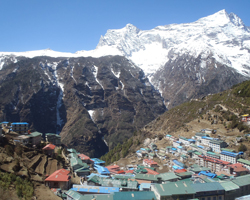
Today is the rest day at Namche Bazaar for acclimatization and to cope with the rising elevation. You can go for a side excursion to Hotel Everest View (3880m) which is considered the hotel located at the highest point on earth. From its balcony, you can have the first glimpse of Mt. Everest and other world’s highest peaks sipping tea/coffee. Then it’s back to your hotel in Namche Bazaar. In the evening, you can explore Namche, talk with the locals, and meet many other trekkers and mountaineers from around the world.
Today’s trek involves many steep ascents and descents, and it’s also a good opportunity for nice photography. On the list are Stupas (Buddhist shrines), prayer flags, mani walls (walls with Buddhist prayers carved into them), and mountains, such as Ama Dablam, and Tengboche Monastery which all are worth a good picture.
The trail up to Tengboche from Lukla is a dusty switchback path but it is all worthwhile as you reach Tengboche which offers a spectacular panorama. Tengboche has the largest Buddhist monastery which is the largest and the most important monastery in Khumbu. Pay a visit to the monastery and with a small donation, you can light some butter lamps.
The trail is quite challenging today but with a very scenic route. The trail follows the Imja Khola ‘River’ climbing up to Dingboche and passing along windswept fields (mainly potato). Dingboche is the highest Sherpa village in Khumbu. The view of AmaDablam is spectacular from Dingboche which arrived during lunch time. After lunch at Dingboche, the rest of the afternoon is free to explore watch the surrounding Himalayas or dig into your books. etc.
As the altitude increases it’s important to get better acclimatization so it’s rest/acclimatization day at Dingboche. You can rest at your lodge or there are several side excursions like a hike to Nangkar Tshang Peak, with its sacred sites and views of Mt Makalu. Or hike to Chhukung (4,730 m) which provides majestic views of Mt. Lhotse, Mt. Makalu and Mt. Choyo. You will also notice Imja Khola Valley as well as the fields and pastures of Dingboche. Afterwards, back to the lodge at Dingboche.
Today you will gently climb to the Pheriche Valley and then trek above the valley floor passing along alpine scrub and yak pastures. En route get a good view of Tawoch and Cholotse, with Ama Dablam behind us. From here you will notice as if AmaDablam is just rising from the valley floor.
Then you will continue to Thokla Pass, where the ascent is challenging. From here is another good opportunity for the best photos of the peaks like Nuptse, Lhotse, Lhotse Shar, and a few other 7,000-plus meter peaks. After crossing this pass will finally reach Lobuche. Lobuche isn’t a big town but is surrounded by dramatic and beautiful surroundings.
Today is the big day as you will be attending Everest Base Camp, the foot of Mt. Everest. You will start first with 3 hours hike to the small village of Gorekshep passing over boulders and rough terrain.
Then hike to Everest Base Camp and upon arrival feel the majesty of the base camp, walk over the Khumbu Glacier from where Everest summiters start their journey to the top. Celebrate your achievement with your trek guide and other members at the base camp. From the base camp enjoy views of Khumbu Icefall, Khumbu Glacier, Nuptse, Pumori, Khumbutse, and a little bit of Everest. Afterwards, back to Gorekshep for the overnight stay.
Start early today to catch the sunrise over the Himalayas from Kala Patthar which is the most popular Himalayan viewpoint in Khumbu providing 360-degree Himalayan panorama including Mt. Everest.
The hike up to Kala Patthar is not that long but steep, rocky, and very challenging. Upon reaching its top you will be rewarded with the most spectacular Himalayan panorama of the peaks like Mt. Everest, Nuptse, Lhotse, Ama Dablam, Thamserku, Pumori, and more.
Afterwards, retrace your way back to Gorekshep for breakfast then descend to Pheriche. It’s a rugged trail to Pheriche and passes along Lobuche and Thukla Pass. As you descend the ridge of Thukla Pass, you will cross a short bridge over a glacial stream to arrive at Pheriche.
Pheriche is a small village with hotels, teahouses, and yak pastures. Himalayan Rescue Association Clinic is also at Pheriche. This voluntary non-profit clinic serves as a rescue station for trekkers and mountaineers in the Himalayas.
We make our way back to Sherpa Town in Namche, which involves a lengthy trial. However, the breathtaking views of the mountains persist, so make sure to pause at intervals and soak in the beauty of the Everest region.
Relishing the majestic mountains, we descend gradually through various communities, such as Orsho, Somare, Pangboche, and Tengboche, until we reach Namche.
Upon reaching Namche, indulge in a refreshing hot shower and unwind for the day. If you desire, you can ask your guide to take you to local cafes, where you can relish delicious baked cookies or savour your favourite coffee.
Tonight, enjoy a cosy night at a guesthouse, reminiscing about the base camp as you browse through your photos and videos.
As you make your way down from the breathtaking mountain views behind you, you will descend to Lukla. The journey takes you through Jorsale, Monjo, and Phakding, showcasing the lush forests and magnificent mountainous terrain that will keep you captivated throughout the trek. Make sure to savour the final moments of gazing at the massive peaks and cherish the end of your Everest hike.
In the evening, it’s time to celebrate the successful completion of your Himalayan adventure with your crew and teammates. Take this opportunity to express gratitude to everyone, especially the porters who tirelessly carried your belongings. A festive atmosphere will envelop the hiking crew as you join the porters and guides in singing, dancing, and enjoying local brews. Before the night ends, consider offering tips as a gesture of appreciation to your porter, guides, and assistant guides, as you bid farewell to most of the porters and assistant guides in Lukla.
Tonight, as you lay down to sleep, let the memories of Everest fill your dreams, knowing that you accomplished an incredible feat.
Bid farewell to the Everest region and the mountain, and take again the trans-Himalayan flight back to Kathmandu to Lukla. The Himalayas slowly fade from your plane window screen and finally land at the airport in Kathmandu. Then drive to a hotel in Kathmandu. The rest of the time is free to explore or simply rest at your hotel.
Today is your final day in Nepal. A representative of Marron Treks will escort you to the Tribhuwan International Airport, three hours to your flight schedule. As we reluctantly wave goodbye to each other, let’s make a wish to stumble upon one another very soon. Have a safe flight back home and we look forward to being your travel companion in Nepal again.
What is included?
- Airport pick-up and drop services.
- Hotel accommodations in Kathmandu on Twin-Share Basis with breakfast.
- Kathmandu/Lukla/Kathmandu round airfare.
- All trekking accommodations with Breakfast/Lunch/Dinner at local lodges.
- Four seasonal sleeping bags (to be returned after trip completion) & Marron Treks duffel bags.
- A comprehensive medical kit (will be carried by the trekking guide).
- Experienced Government licensed English Speaking Guide & Porter (1 porter for two people) including their food, accommodation, salary & insurance.
- Permits for Everest National Park and Pasang Lhamu Municipality entrance fee.
- Farewell Dinner at Nepali Authentic Restaurant.
- All government and local taxes.
What is not included?
- International airfares.
- Nepal entry visa fee – Visa can be obtained upon your arrival at the Tribhuwan International Airport in Kathmandu. (USD30 for 15 days)
- Lunch & dinner in Kathmandu.
- Personal travel insurance.
- Emergency rescue evacuation (to be covered by the client's travel insurance).
- Other expenses of a personal nature (phone calls, laundry, battery recharge, bottle or boiled water, hot shower etc.)
- Bar bills, alcoholic drinks & beverages.
- Tips for guides and porters (Tipping is expected).
Route Map

Video
Trip Info
Accommodation
While you are in Kathmandu, we opt to accommodate you in 4- or 5-star hotels like Hotel Royal Singhi (4-star), Hotel Manaslu (4-star), Radisson (5-star), Yak & Yeti (5-star), or similar. During the trek, you will be accommodated in a local mountain lodge, better known as Tea House. These lodges and teahouses provide good services and are equipped with basic amenities. We will endeavor to provide you with the best accommodation available along the route so that you get a good night’s rest in a hygienic milieu.
Meals
We never compromise the quality of food or the health of the trekkers as well as the crew members. Generally, we opt for the fresh and nutritional local community food available. You could make your delicious pick from an array of traditional foods like sweet potatoes, buckwheat barley, etc. This way, you could not only get a real sense of the local culture and life patterns but also contribute to promoting the locally available resources of organic food and beverages. Besides, a wide range of Continental, Chinese, Italian, and Indian cuisines like pizza, spaghetti, French fries, soups, bread, masala curry, etc. are also available in the restaurants for your retreat.
Acclimatization
Altitude sickness is a serious risk while trekking in the Himalayas. It's important to acclimatize properly by spending a few days at lower altitudes before heading higher. By spending time at lower altitudes before pushing higher, your body has time to adjust. Our trekking packages have enough acclimatization days planned where you'll be spending a day or two at lower altitudes, allowing your body to adjust to the increasing altitude.
Electricity & drinking water
For an additional cost, you can use the electricity in all tea houses and lodges to recharge your batteries. The lodges have packaged mineral water for sale, or you can fill your bottle with boiling water. To make water drinkable, you can use water purification tablets too. But, due to hygienic issues, you should avoid drinking water from taps, rivers, or wells in trekking areas.
Communication
At lodges, restaurants, and hotels, Wi-Fi is available for an additional fee in the most popular trek regions, like Everest and Annapurna. However, at high elevations, phone calls are the only means of connection. Our office in Kathmandu is in constant communication with your trek guide. In Kathmandu, you can purchase a local SIM card for communication purposes. At high elevations, the mobile signal might not be as strong, though.
Luggage
Our porters are paired with one trekker for every two hikers, and one porter can safely carry 30 kg maximum weight. Therefore, we advise you to fill your duffle bag not more than 15 kg of your belongings. You may carry a small backpack with your valuables and informational documents. The things you are not taking along on the trek can be stored in a hotel in Kathmandu free of charge.
Typical Trek Day
Mostly your trek day starts with breakfast at 7-8 am, followed by a 3-4 hour morning trek. Lunch break is around an hour, then you continue trekking to your destination for the day. After reaching the teahouse lodge, you can relax, explore nearby areas, and enjoy dinner at 6-7 pm. Evenings involve socializing, a trek briefing, and leisure activities before bed.
Travel Insurance
It is advised that you arrange your travel insurance before leaving your homeland. The main thing is to make sure that your insurance covers you for both medical and evacuation costs. Having travel insurance with you makes your trip secure and hassle-free.
Our Guides
Guides play a significant role during the trek. They are the ones who decipher the trekking codes for you so that you can connect with nature, culture, and people along the way. We have helpful and dedicated trekking guides who are very well-versed in the culture, life patterns, and every single detail about the trek region you are traveling in. Thus, in the company of our professional Sherpa guides, your trek becomes not only entertaining but also equally informative.
Porter and Staff Care
Regarding high-altitude trekking, porters and staff members make up a pivot. Marron Treks ensures that all the porters and staff members going to high altitudes are provided with adequate clothing and equipment. All our field staff are covered by insurance.
Money
Nepal uses the Nepalese Rupee (NPR or Rs) as its official currency. Commonly used bank notes are Rs. 5, Rs.10, Rs. 20, Rs. 50, Rs. 100, Rs. 500 and Rs. 1000. At authorized money exchange counters, particularly in popular tourist locations like Thamel in Kathmandu and Lakeside in Pokhara, as well as at certain hotels, you can convert foreign currencies. It's possible that hotel exchange rates are lower than those at currency counters. Exchange rates can range significantly between providers, so compare them. The current rates are often shown at licensed counters.
ATMs are widely available in major cities like Kathmandu and Pokhara. Withdrawal restrictions at Nepali ATMs are typically set at NPR 25,000 to NPR 35,000 per transaction. You might need to make multiple withdrawals for larger amounts, incurring fees with each transaction.
Genral payments like shopping, restaurant bill etc should be made in cash since only big establishments or shops in major cities like Kathmandu and Pokhara accept credit and debit cards and cash is still the most widely used form of payment, especially in rural areas, for smaller businesses, and on trekking routes.
Major credit cards like Visa, Mastercard, and American Express are accepted in many mid-range to premium hotels, restaurants, shopping malls, and tourist-oriented shops inside tourist areas like Thamel in Kathmandu or Pokhara. Kindly note all of these establishments will charge an additional fee (around 2-4%) for credit card transactions. So, payment method in general is either cash or credit-card, since credit-card transactions will incur extra fees, so exchanging your currency into Nepali rupees for your payments is suggested.
